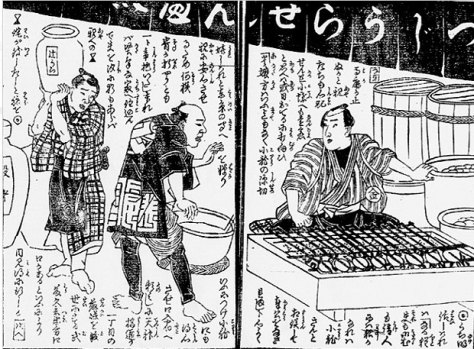Loyalist Militiaman at the Moment of Death, Cerro Muriano, September 5, 1936 (commonly known as The Falling Soldier) was first published in the September issue of the French Vu magazine in 1936. It subsequently became a symbol of the Spanish Civil War.
Robert Capa initially said in 1937 that he took the picture when he was trapped in the trenches with a Republican soldier. The impatient soldier decided to jump out of cover, and Capa followed suit and upon capturing the death of the soldier he jumped back to cover. In a 1947 radio interview, however, he changed his story slightly. He then said that he was stuck in the trenches with about 20 soldiers, and on a whim he held up his camera to take a blind shot. Despite the two contradictory accounts, the authenticity of the picture wasn’t doubted until the 1970’s (outside of Spain, anyway).
But in 1975 an Australian reporter claimed that the photograph was staged. Capa’s biographer disputed these claims, and referred the journalist to the opinion of certain forensic experts who thought the soldier had indeed been shot. Furthermore, a historian claimed to have identified the soldier in the picture; it was a Frederico Borrell Garcia. However, the debate surrounding the photograph didn’t end there.
A documentary from 2007 concluded that the picture was taken in the morning, when there was supposed to be no fighting at all. In 2009 a Spanish newspaper claimed that it wasn’t even in Cerro Muriano. Lastly, another documentary from 2013 suggested that the photograph was actually taken by Gerda Taro, Capa’s professional partner.
So in summation, some details regarding The Falling Soldier are unclear. However, some think that that may be irrelevant in the grand scheme of things. As Sebastiaan Faber (a historian specializing in the Spanish Civil War) wrote:
“It’s time to ask the central question: What if The Falling Soldier were staged? Would the knowledge that the man depicted in this image did not die at the moment the photo was taken change the way we think about Spain, the Civil War, or twentieth-century history? The answer is that it wouldn’t. Capa did not record a news event at Espejo. What made his image so powerful was not that it pictured a history-changing, unique incident—the moon landing or the murder of a president or the conquest of Teruel. We see an unknown man dying at an unknown location in Spain, and we know, as did Capa’s first viewers, that hundreds of Spanish men and women were dying in this way every day.”
(via)










